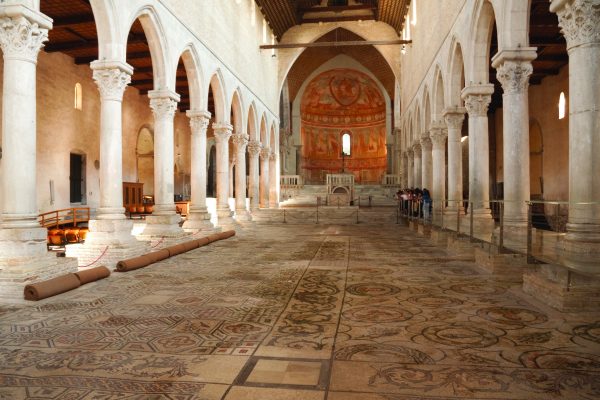This once great Roman city fell to barbarians but, though much of Aquileia was razed, a freshly lain colourful mosaic floor was left perfectly intact…

This 4th-century mosaic floor, spreading over 760 square metres within the pillared nave of the Patriarchal Basilica di Aquileia, could easily have been lost to the ravages of time. The Roman city of Aquileia, once one of the largest and wealthiest cities of the early Roman Empire, was sacked and destroyed by Attila the Hun in 452 AD, soon after the floor was completed. Yet the pavement still remains.
Even more remarkably, visitors looking down from the raised walkway above it today see the mosaic in much the same condition as it would have been for the inhabitants of the Roman city. The colourful tiles combine to create a Christian storyscape that adheres to the prohibitions of the time forbidding representations of Jesus in human form, by depicting him as a goat while his twelve apostles feature as a dozen eggs.
Most of the original church that once housed the mosaic is gone, however, and it now lies within a cathedral built between the 11th and 14 centuries in the Romanesque and Gothic styles. The cathedral and its mosaic floor themselves form part of a wider, 155-hectare site that also includes the remains of Aquileia’s port and other archeological remains, still yet to be fully excavated.
The floor itself is remarkably well-preserved, however, and looking at it today you could be forgiven for thinking the 2,000-strong population of Aquileia had only recently departed. Unsurprisingly, UNESCO has declared this site in Friuli-Venezia Giulia, six miles from the northern tip of the Adriatic Sea, to be of outstanding universal value.
Enjoyed this article? Read more like it in our archive.
